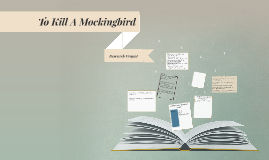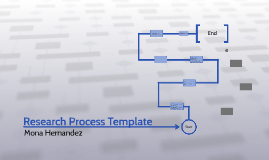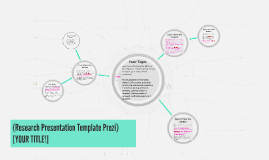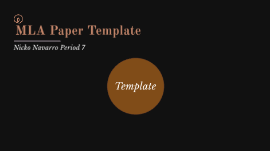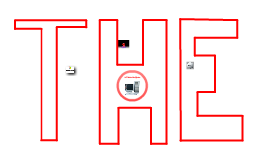PCOS medical research presentation
Transcript: By Izabella Starzycka Polycystic Ovary Syndrome WHAT IS PCOS? PCOS Overview Jullia Michaels, Victoria Beckham, Harnaam Kaur Emma Thompson PCOS? What is PCOS? "Syndrome: a group of symptoms which consistently occur together, or a condition characterised by a set of associated symptoms" PCOS is characterised by 5 main features: - Irregular periods or no periods (oligomenorrhea/amenorrhea) - Excess androgen levels (hyperandrogenism) - Polycystic ovaries - Excessive hair growth (Hirsutism) - Infertility HISTORY History of PCOS The first documented case was in 1935, by Stein and Leventhal. They described patients as being infertile women, who had no periods, excessive hair growth, and cysts on their ovaries. At first the condition was known as Stein-Leventhal syndrome. And it is now recognized as a common, heterogeneous, heritable disorder that affects women throughout their lifetime. What causes PCOS? Aetiology - The exact cause of polycystic ovary syndrome (PCOS) is unknown, but it's thought to be related to abnormal hormone levels. - Estimates suggest that polycystic ovary syndrome (PCOS) affects between 8% and 20% women worldwide. Most Common "Theory" - Woman with PCOS have an imbalance is between luteinizing hormone and follicle stimulating hormone. An imbalance in these hormones causes a rise in the levels of testosterone and androgen. - High levels of insulin caused by insulin resistance also increases levels of testosterone. - Higher levels of testosterone interferes with the development of the follicles and prevents normal ovulation. - Women may also have lower levels of sex hormone-binding globulin which is a protein needed to reduces the effect of testosterone. The main symptoms of PCOS are: - Irregular periods or a complete lack of periods - Irregular ovulation, or no ovulation at all - Infertility - Hirsutism - usually on the face, chest, back or buttocks - Oily skin - Acne - Alopecia - Weight problems – being overweight, rapid weight gain, difficulty losing weight - Depression and mood changes Pathophysiology Symptoms Comorbidities Comorbidities “In medicine, comorbidity is the presence of one or more additional diseases or disorders co-occurring with a primary disease or disorder.” Comorbidities associated with PCOS include: metabolic syndrome, hypertension, dyslipidemia, glucose intolerance, diabetes, hirsutism, acne, seborrhea , alopecia, infertility, endometrial cancer, mental health conditions, and menstrual problems. - Woman with PCOS are more likely to: have difficulties conceiving, have a miscarriage, deliver premature or stillborn babies, have an ectopic pregnancy. - Therefore pregnancy for women with PCOS comes with great risks. Fertility Fertility Metabolic syndrome can lead to obesity, glucose intolerance, dyslipidemia, and high blood pressure, which all increase the chances of stroke or heart attack. Hypertension also increases chances of developing a heart attack or stroke. Metabolic Syndrome and Hypertension Metabolic Syndrome and Hypertension Women who suffer from PCOS are also at high risk of developing diabetes; one study has shown that around 40% of woman suffering from type 1 diabetes also have PCOS. This is due to the increased resistance to insulin. Diabetes and PCOS Diabetes Women with PCOS are also at higher risk of developing endometrial cancer (0.4% vs 0.02%). The chances of developing endometrial cancer is associated with the fact that the women lack regular periods. Endometrial Cancer Endometrial Cancer What is the Affect of PCOS on Everyday Life? - PCOS is the main cause of infertility in women. - Women suffering with the condition are also more likely to develop type 1, 2 and gestational diabetes - Find it more difficult to lose weight. - Cosmetic issues: such as the bad skin, the excess hair. - Poor self confidence Affect on Day to Day Life - Diagnosed with the condition at age 19 - First symptoms from around age 13. - Symptoms include insulin resistance, acne, weight gain and retention, hirsutism, cysts on ovaries, and unusual periods. - Effect on everyday life: cosmetic issues, bad skin, excess hair and difficulties losing weight. Worrying about the way she looks, which has lead to poor self confidence and depression, she is also worried about the potential health risks that may come in the future such as infertility, or long-term health problems (heart disease). - Treatment: Yasmin birth control pill and laser hair removal. - Emotional affects: depression, finding it more difficult to form intimate relationships Megan's Case Case Study Diagnosis Diagnosis and Treatment - There is no actual cure for PCOS and therefore the general treatment involves treating/minimising the symptoms. - One of the simplest ways to help combat the symptoms of PCOS is through weight loss, a healthy diet and regular gentle exercise. - Medication-based pathway of treatment include prescribing oestrogen and progestogen-based drugs - contraceptive pill. - Help regulate the levels of hormones






